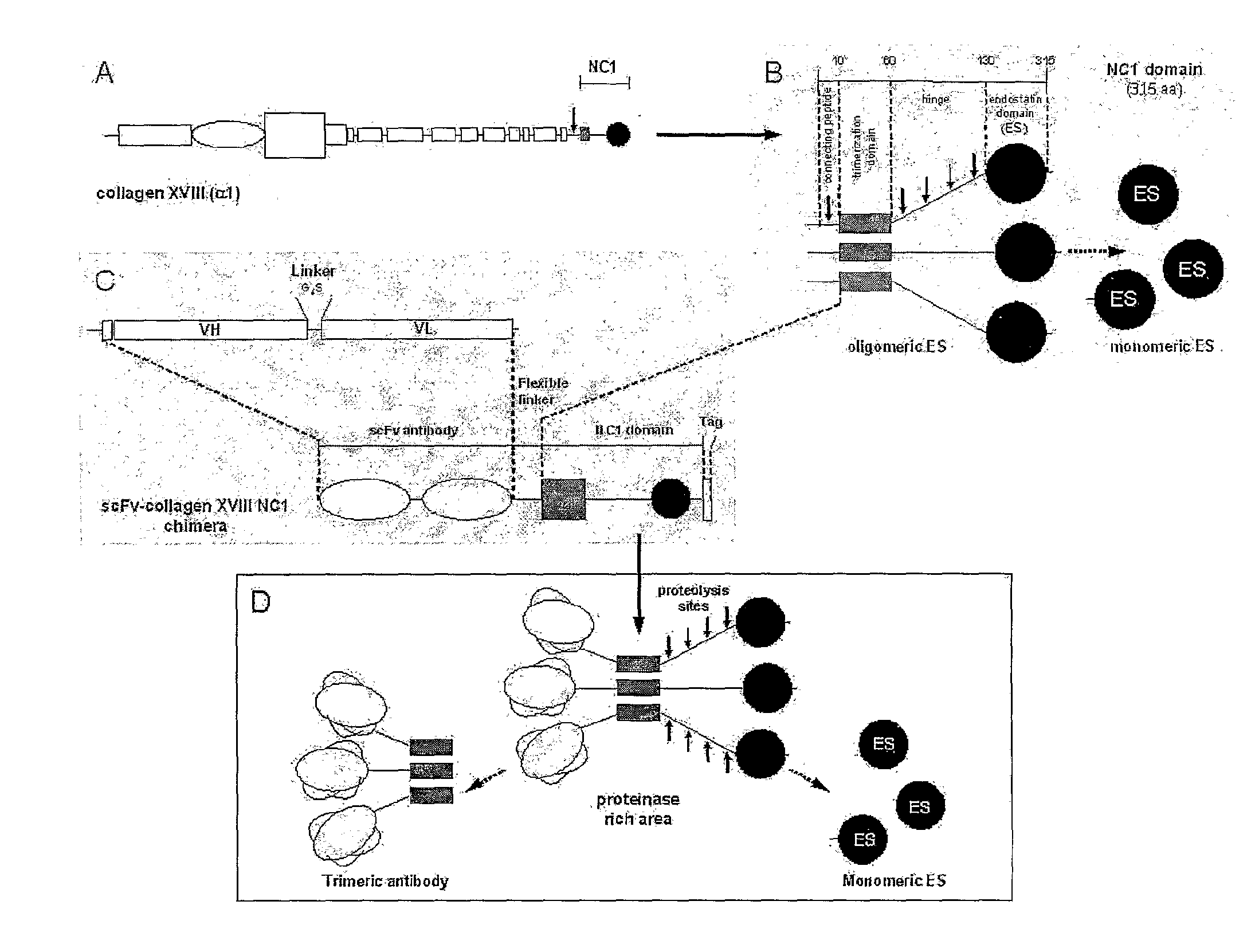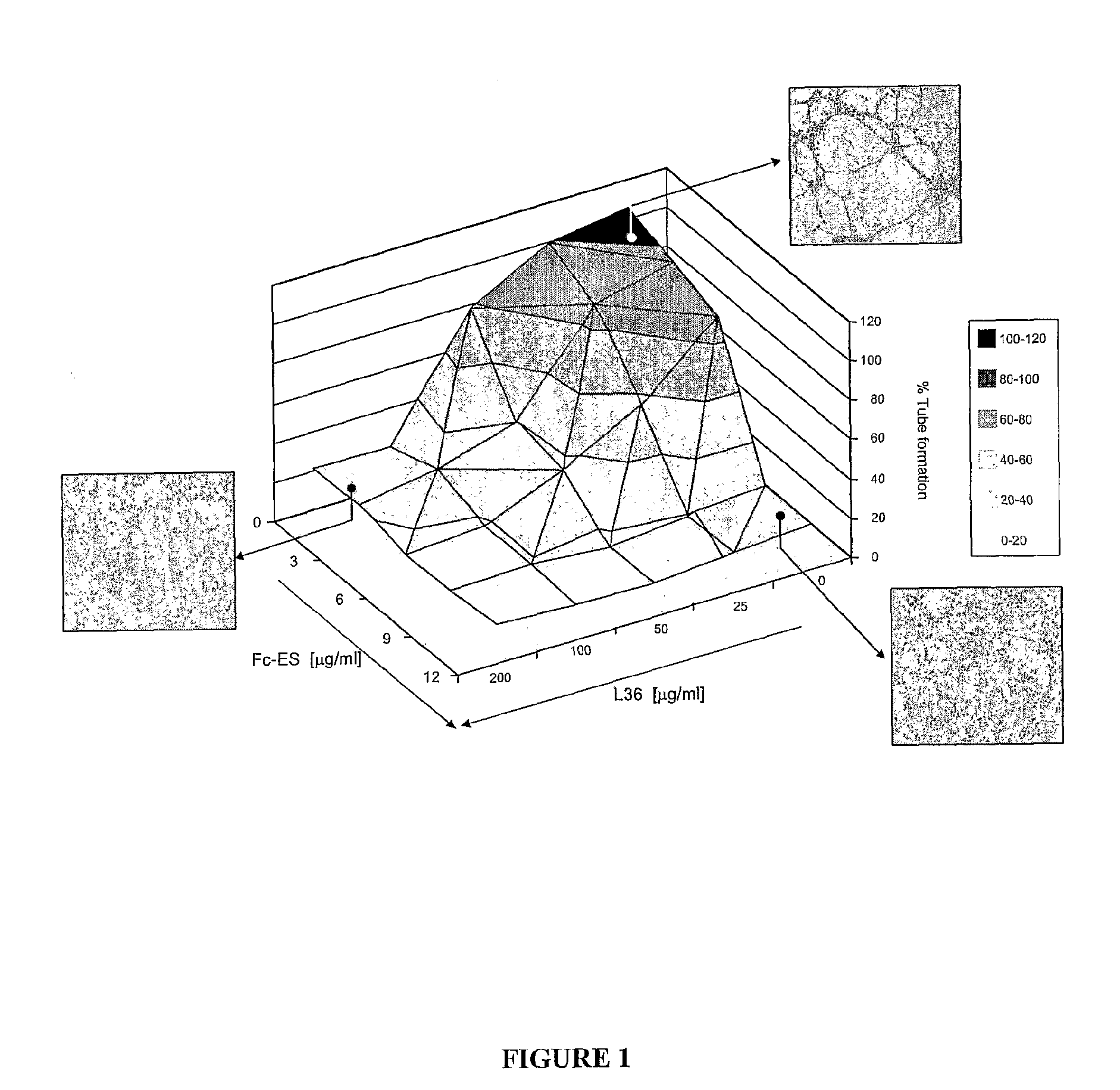Multifunctional and Multivalent Angiogenesis Inhibitors
an angiogenesis inhibitor, multifunctional technology, applied in the field of fusion proteins, can solve the problems of significant tumor growth inhibition, animal death, and inability to fully absorb angiogenesis, and achieve the effect of preventing pathologies
- Summary
- Abstract
- Description
- Claims
- Application Information
AI Technical Summary
Benefits of technology
Problems solved by technology
Method used
Image
Examples
example 1
Design and Expression and an Angiogenesis Inhibitor Made Up of an Antibody Fragment and Collagen XVIII Oligomers
[0076] Several gene constructs (FIG. 3A) capable of expressing the following products have been generated:
[0077] the single chain Fv fragment (scFv) of the anti-laminin monoclonal antibody L36 (L36 scFv),
[0078] the fusion protein identified as L36 scFv-NC1ES− made up of L36 scFv fused to the trimerization domain present in the NC1 domain of mouse collagen XVIII (residues 10 to 60) through a flexible connector peptide (linker),
[0079] the fusion protein identified as L36 scFv-NC1ES+ made up of L36 scFv fused to the NC1 domain of mouse collagen XVIII (residues 10 to 325) through said linker,
[0080] the NC1 domain of mouse collagen XVIII (residues 10 to 315) (NC 1), and
[0081] the endostatin (ES) from the NC1 domain of mouse collagen XVIII (residues 130 to 315), which is proteolytically released in trimeric form and subsequently converted into monomeric ES of approximately...
PUM
| Property | Measurement | Unit |
|---|---|---|
| molecular mass | aaaaa | aaaaa |
| pH | aaaaa | aaaaa |
| flow rate | aaaaa | aaaaa |
Abstract
Description
Claims
Application Information
 Login to View More
Login to View More - R&D
- Intellectual Property
- Life Sciences
- Materials
- Tech Scout
- Unparalleled Data Quality
- Higher Quality Content
- 60% Fewer Hallucinations
Browse by: Latest US Patents, China's latest patents, Technical Efficacy Thesaurus, Application Domain, Technology Topic, Popular Technical Reports.
© 2025 PatSnap. All rights reserved.Legal|Privacy policy|Modern Slavery Act Transparency Statement|Sitemap|About US| Contact US: help@patsnap.com



